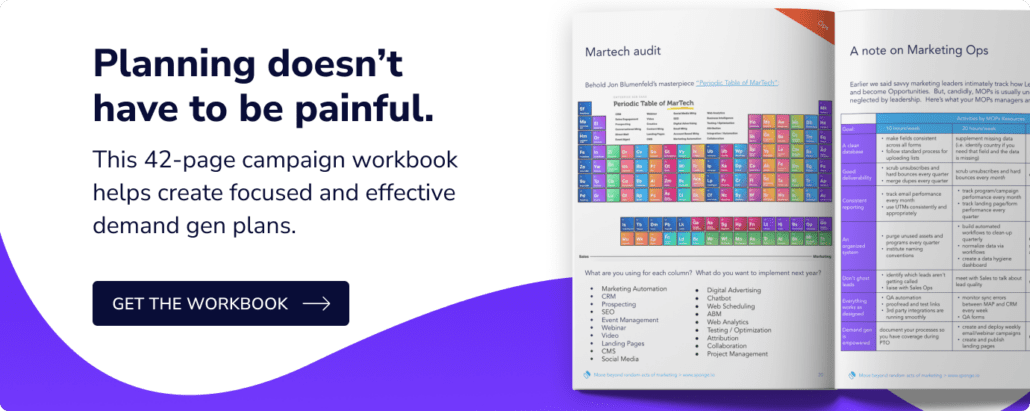Is brand awareness a part of demand generation? No, the pure definition of demand generation nullifies this notion. Demand generation is the process of generating measurable demand for your product or service. Brand awareness on the other hand is more about maintaining a visible presence between your company and consumers. This is a practice that is not always measurable by today’s marketing metrics.
>> Related: Marketing’s Shift from Brand to Revenue <<
With that in mind, it is important to align your demand generation efforts with your overall brand awareness strategy. Yes, the two are different components of the marketing mix and brand awareness is difficult to measure; but the two do have coinciding metrics that they both need to achieve. Here are the top four metrics for aligning brand awareness and demand generation:
- Revenue Generated
- Return on Investment
- Leads Generated
- Website traffic
In this post we will walk through each one of these four metrics and explain how they are reached on the demand side and how they are reached on the brand side. For this post we will be referencing a case study done by Act-On in their E-book, Rethink Marketing [Automation].
The case study by Act-On interviewed over 900 marketers about their KPI’s (key performance indicators) in terms of either demand, brand, or customer marketing. We will be focusing on brand and demand for this post and the metrics that closely align between the two.
Brand Awareness
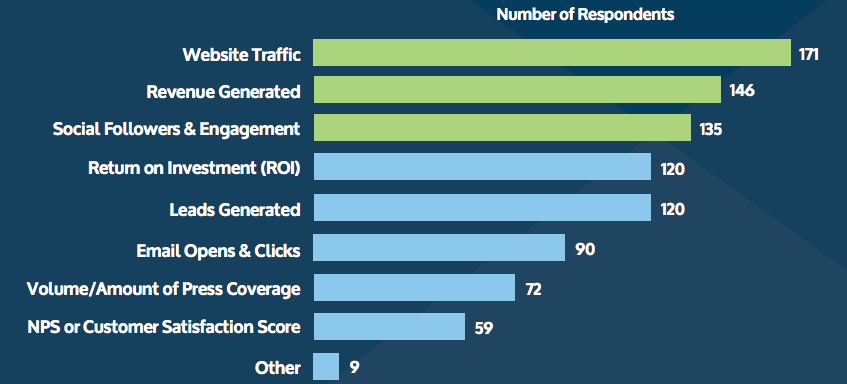

Demand Generation
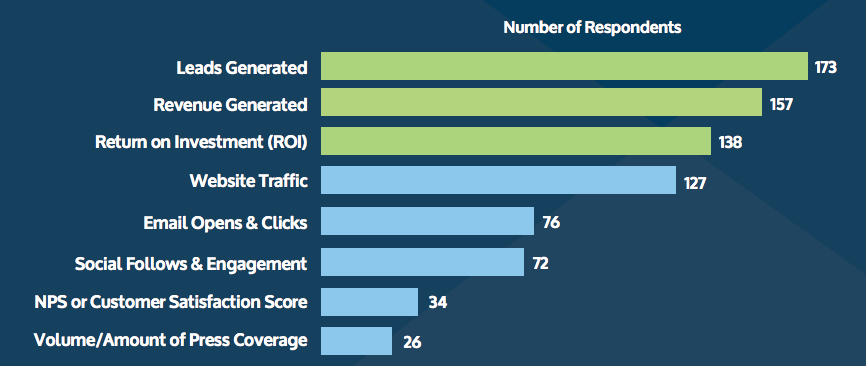

1) Revenue Generated
Revenue generated is an easy metric to wrap your head around. It simply is the amount of revenue created by a marketing “action”. This could be the revenue that comes from a full campaign, or it could be the revenue that comes from a single piece of content. Revenue generated is an important metric for everyone in the company because it applies directly to executives. Executives always want to know how much money is being made by the marketing team. This makes revenue generated an important metric to keep track of. As marketers you should be able to tell which campaigns are generating revenue. If a campaign isn’t generating revenue it needs to be changed or killed.
Brand Marketing Outlook
It seems strange that branding is concerned with revenue generation. It is difficult to track branding efforts effect on the bottom line. What many fail to realize though is that social media falls under the umbrella of branding. Social channels can be an effective means of not only prospecting, but nurturing leads once they have entered the funnel.
For example, image you have just finished recording a webinar with an SME. This webinar is aimed at on-boarding prospects into the sales funnel. Now that the webinar is done do you just wash your hands of it? NO! Now is the time to push that content out to more people. Your company’s social channels are a good source for remarketing your content. You can track who clicks on this content and if they wind up making a purchase at the end of the sales funnel to add to revenue generated. Most companies understand that sales are a long process and will assign a portion of revenue generated to a prospect clicking on a social media link to show how much total revenue was generated from branding.
“50% of B2B marketing executives find it difficult to attribute marketing activities directly to revenue results as a means to justify budgets” -CMO.com
Demand Generation Outlook
Demand generation has an easier path to seeing revenue generated from marketing activities. A lot like with brand marketing, a marketer on the demand team can see if a person who read their blog post wound up converting to a sale down the way and can assign revenue value to that particular blog post. This form of assigning revenue to a blog post is called attribution. Even though a consumer did not buy anything from the blog post, you still need to assign a portion of the final revenue due to it being a touchpoint on the path to conversion. Attribution is one way that marketers can help prove the benefit of their content to executives when reporting.
As I mentioned prior, executives like to see that revenue is coming from marketing activities, making it extremely important for marketers to be able to justify their content. Demand generation marketers are creating content, but the brand side of the marketing team is assisting in getting that content seen to help boost overall revenue generation for content or campaigns as a whole.
2) Return on Investment – ROI
Marketing ROI is an easy metric to guess as being important to both the brand and demand teams since almost every article on the web is referencing the importance of measuring ROI. ROI is overstated at times, but it is extremely important to businesses, especially in the marketing department. ROI is essentially the bang that you are getting for your buck, and if you are spending less and getting more in return, then you’re making effective campaigns which makes everyone’s job easier.
Brand Marketing Outlook
10 years ago, it might’ve been impossible to determine the return on investment from branding activities, but with technological advances and new tools that we now possess as marketers, it has become easier to know if you’re making an impact for your brand.
One such tool that has changed the way we measure branding ROI is Google AdWords. Google AdWords is Google’s paid advertising platform that allows user’s to pay to have their ad(s) shown for specified keywords. This may not sound like it has anything to do with branding but it does. Say you are running a branding campaign trying to get more visitors to search for a specific page on your website relating to a branded term. Over time you’ll see the fluctuations in search traffic for that term by reviewing your Google AdWord’s reports. By placing a snippet of code to the end of your URL on your ad links, Google is able to track clicks on your ads. If you see an increase in web traffic directed at a landing page coming from your ads then you know that your branding activities are paying off.
Demand Generation Outlook
Return on investment is very important for demand generation. The main task of a Demand Generation Director is to acquire more leads; but the second part that is often missed in that statement is that it needs to be done as cost effective as possible. It might be that you are acquiring 1,000 new leads a week and have a good conversion rate of about 30%, but if you are spending $4,000 on marketing to get those leads and your product is only worth $100 then you are missing the entire point.
When increasing demand for your business you need to be able to increase demand without increasing spending. More for less. To do this you might try and improve on your conversion rate. This is a ver effective way to increase marketing ROI because you are not driving more traffic to your site, you’re just doing a better job at getting visitors to perform a desired action. You can do this by optimizing landing pages, or call’s to actions so that they’re simpler. Make it as easy as possible to understand what to do next when landing on a page.
Another option that you might consider is to generate more leads with recycled content. Take content that is old and outdated and give it a facelift. Then take the “new” content and remarket it to bring in more customers without having to put more time into creating an entirely new piece of content.
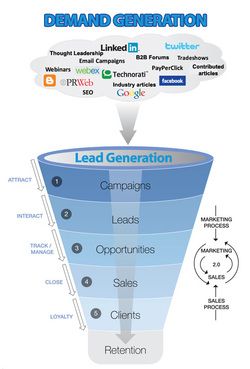

3) Leads Generated
Generating leads is a lot more important for the demand generation team than it is for the branding side of operations, but it is still important non the less. Leads are what drive revenue for a business; the more leads you have the more potential revenue you stand to acquire. We have already talked about how important it is for brand and demand to show revenue generated, and revenue and leads go hand-in-hand.
Brand Marketing Outlook
Branding is not solely focused on generating new leads for the business as it is more of a perk when a lead comes from a branding campaign. Examples of companies that have great lead generation from branding are IBM, Nike, and Starbucks. These are not your average companies though as they possess large amounts of funding for branding, thus increasing their visible presence beyond what is normally capable. A more traditional example of branding leading to leads would be Honest Tea.


Honest Tea is a beverage provider owned by the Coca-Cola corporation. They possessed only a small marketing budget in their early goings. To increase brand awareness Honest Tea ran a campaign called the “National Honesty Index” where the company set up unmanned kiosks around major cities in America asking customers to give $1 and take a tea. The teas were not locked away; they were simply out in the open for anyone to take. The campaign was a huge success getting national media attention as to what city was the most honest in America. This lead to a huge influx of online visits and purchase order requests. Honest Tea is a great example of how a branding campaign can lead to unforeseen leads seeking out your business without that sole intention.
Demand Generation Outlook
Lead generation is the main KPI for anyone working in demand gen. The demand gen team and the sales team work closely together for most businesses. The task of the demand team is to acquire as many leads as they can and qualify them to then be passed along to the sales team. This is mainly done through content creation and promotion. Many sources are used to create new and exciting content. Once content is created use different channels to promote the content to different targeted prospects to help generate leads.
When the demand gen team is trying to acquire new leads, they typically take content and place it behind a “gate”. By doing this they are able to acquire information about a person that can help them make a sale down the road. An example is giving your name and email address on a signup form for a webinar. You get access to the webinar, but it also gives your information to the company to determine if you are a viable prospect.
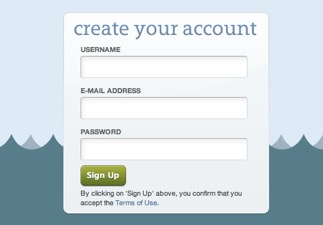

4) Website Traffic
Creating website traffic is a very simple topic. You’re trying to create something that in turn will push more users to visit your website. Why might you be wanting to do this? Maybe you’re running a sale, or want to have visitor’s signup for a webinar that is being hosted from your website. What most people fail to do properly is have an optimized website. Each page on your site should have one specific task, and you should be able to figure out what that task is within five seconds of landing on that page. Have a high converting website can make branding and demand generation campaigns much more successful.
Brand Marketing Outlook
Driving traffic to your website is one of the main focuses of brand awareness. How do you do this though? Brand awareness is in large part about understanding your target market. Having a deep understanding of your target market makes it is easier to create a message that appeals to them. Companies like Apple, Google, and BMW understand who their customers are, and as a result do a brilliant job at branding around them.
By having the proper branding message within your campaign, you’re not only enticing your current clientele to visit your website, but those that come into contact with your campaign and identify with the message. Your best chance at increasing traffic from branding is to use strong calls to action wherever possible. Your job in marketing is to act as a guide and you do not want prospects to get lost. Give them a single, easy to follow route from each touchpoint to a final sale. One CTA on every one touchpoint.
Demand Generation Outlook
Increasing traffic to your website isn’t the main task of the demand gen team, but it is an important one. Your website is a hub for sales and the more people you can get there; the higher sales numbers you will generally see. As mentioned previously, the demand gen team does a lot of content creation, and to get people to your website you need to use calls-to-action, just like the branding side of operations. Whenever you are finishing a blog post, webinar, e-book, it is a good idea to have a CTA there. The person has already shown interest in your product/service, so why not see if they are interested in more? One of the best companies at optimizing CTA’s is Hubspot. Below is a great example of one of Hubspot’s CTA’s.


Once a prospect has reached your website hopefully you have it optimized to convert on each of your pages. It is important to have a specific purpose for each one of your web pages. The next step on a page should be easy to notice and follow through on. The demand generation team is responsible for using content to push traffic to the website, and then follow through on the next value adding task.
Conclusion
Brand awareness and demand generation are two different segments of the marketing team. The two need to be aligned in order to obtain a successful marketing mix. This happens with constant communication. Try having a monthly, or bi-weekly meeting to ensure everyone on the marketing team understands the focus of marketing efforts. Many KPI’s align for both brand and demand, the hard part is implementing the right strategies to ensure that both brand and demand are meeting selected goals. I have always found that simpler is better. The more you can simplify the process for increasing conversions for these KPIs, the better off you will be.
Image © Can Stock Photo / venimo


